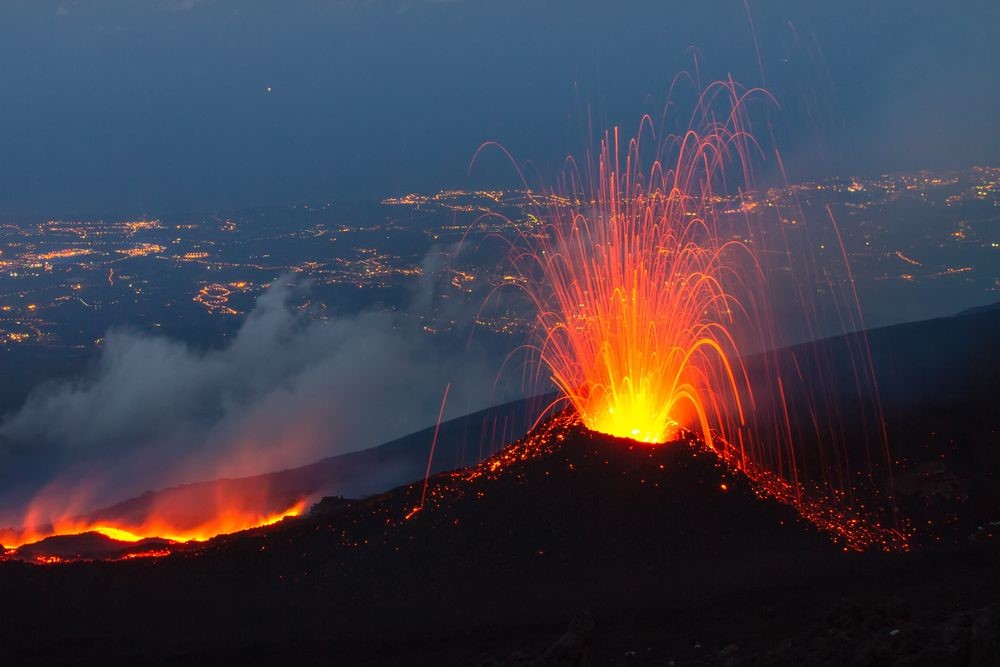Description

Disclaimer: Copyright infringement not intended.
Context
- On the island of Sicily, the Mount Etna volcano erupted again, spewing ash miles into the sky.
- The eruptive column is believed to be more than 14,700 feet above sea level.
- It is worth noting that volcanic eruptions only make headlines when the big ones erupt – Etna, Kilauea, Mauna Loa, Merapi, Eyjafjallajökull, or Fagradalsfjall.
What is a volcano?
- Volcanoes are openings, or vents where lava, tephra (small rocks), and steam erupt onto the Earth’s surface.
- Volcanoes can be on land and in the ocean.
- They are, in part, a result of their own eruptions but also the general formation of our planet, as tectonic plates move.
.jpg)
Types
- There are four main types of volcanoes: cinder cones, composite or strato volcanoes, shield volcanoes and lava
- Their type is determined by how the lava from an eruption flows and how that flow affects the volcano, and, as a result, how it affects its surrounding environment.
Eruption
- Essentially, it is a case of magma, or molten rock, below the surface of the Earth, bubbling up, rising and overflowing,
- The magma finds its way to vents in the volcano and gets spewed across the land and into the atmosphere.
- When magma erupts from a volcano, it is called lava.
Can scientists predict volcanic eruptions?
- Scientists can forecast volcanic explosions several hours, if not several days, in advance.
- This is not the case with earthquakes, which are far more difficult to forecast.
- Scientists study seismographic data from earthquakes and other tremors because they can be precursors to volcanic eruptions.
- They keep an eye out for evidence of ground deformation induced by magma migration.
- They also measure volcanic gas releases as well as changes in gravity and magnetic fields.
Volcanoes particularly active in the Pacific Ring of Fire
- The Pacific Ring of Fire includes New Zealand, Southeast Asia, Japan, and the western coast of the Americas.
- About 90% of all earthquakes worldwide strike within this region.
About Mount Etna
- Mount Etna is an active stratovolcano on Sicily's east coast.
- It is Europe's most active volcano and one of the world's largest.
- Its volcanic activity goes back to 1500 B.C.
- It has erupted more than 200 times since then.
- Etna has erupted in a variety of modes, including tremendous explosions and massive lava flows.
Other volcanoes erupt for significantly longer periods of time than Etna
- The Kilauea volcano in Hawaii was one of the most well-known long-term eruptions.
- It began pouring in 1983 and continues – practically nonstop — for 35 years until 2018, only to restart in 2021. The eruption is still in progress.
- Dukono began erupting in Indonesia in August 1933 and is still active today.
- The eruption of Santa Maria in Guatemala began in June 1922 and continues to this day.
- Yasur in Vanuatu first erupted around 1270 (110 years ago) and was still erupting as of June 2023.

|
PRACTICE QUESTION
Examine the strategies that countries can adopt to mitigate the risks associated with volcanic activity. Provide examples from different parts of the world to illustrate your answer.
|












